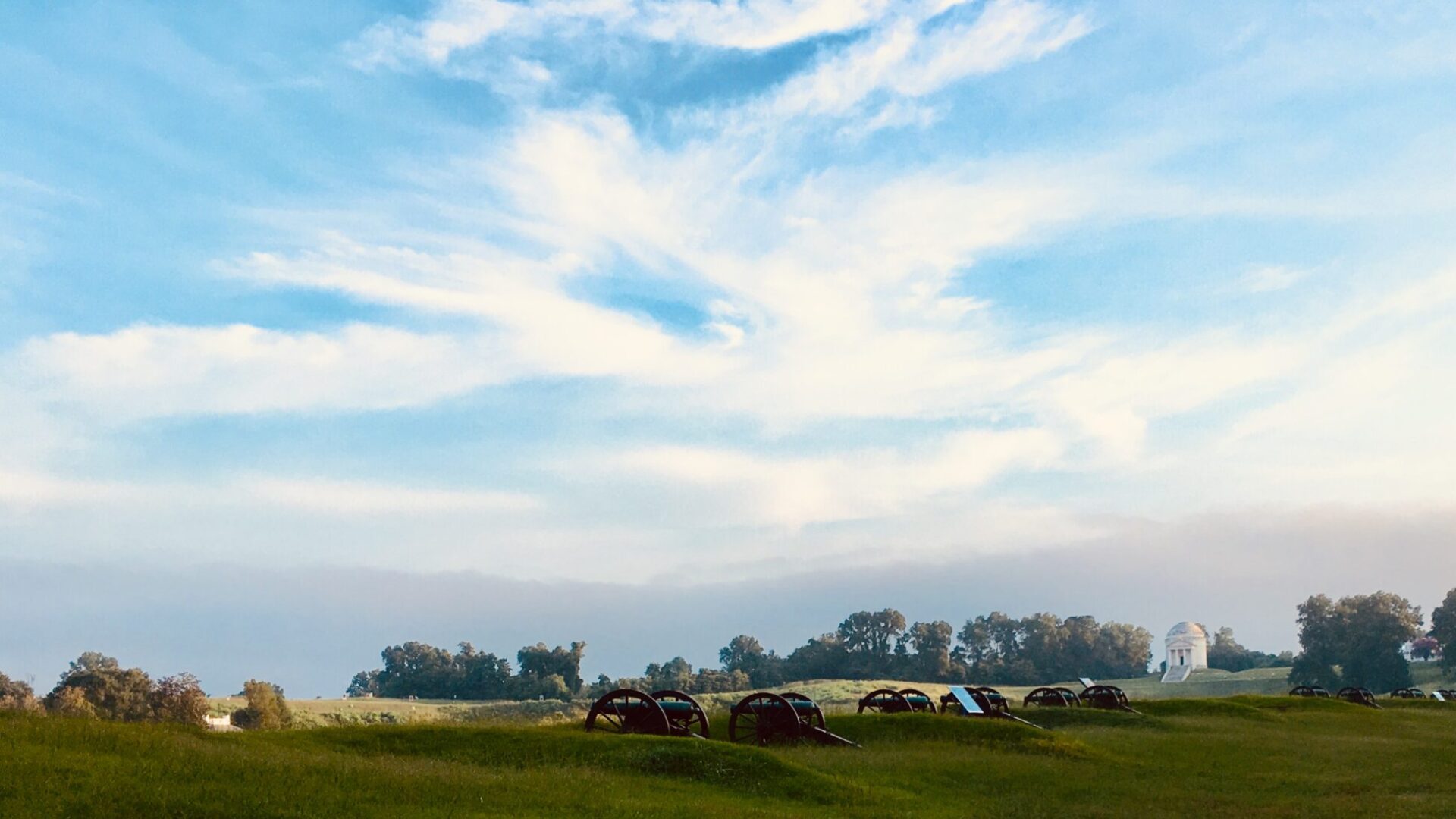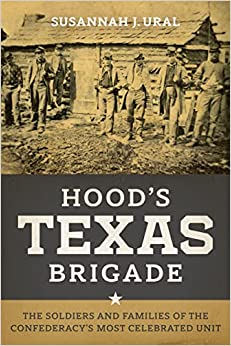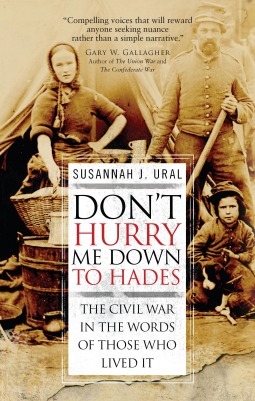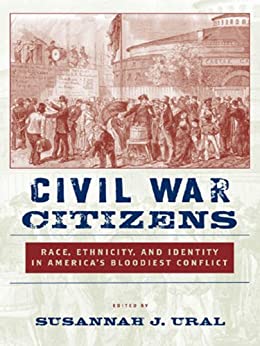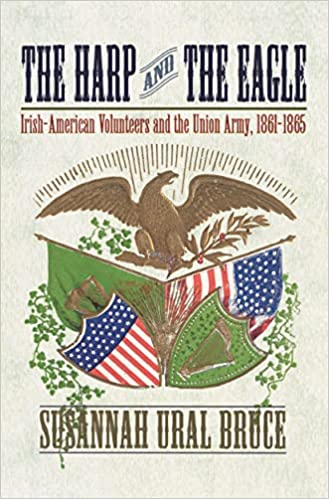Susannah Ural’s publications reflect her interest in military history, and more specifically, in the socio-military experiences of U.S. Civil War soldiers and their families. The author of four books and numerous articles, columns, blog posts, and digital projects on the U.S. Civil War and Reconstruction eras, Ural is part of a group of scholars who offer new approaches to unit histories that embrace a fuller understanding of the communities men form in units and how these reflect and interact with the communities from which they came (see, for example, Hood’s Texas Brigade below). Her new book project blends this interest in military units with a growing interest in how top military and political leaders learned from units in the field and acted on these lessons. This book analyzes the enlistments and experiences of United States Colored Troops in the Mississippi Valley between 1863 and 1865, and considers how these experiences shaped President Abraham Lincoln’s and the US War Department’s policies in the last two years of the Civil War. Below is a sampling of Ural’s publications.
Books
One of the most effective units to fight on either side of the Civil War, the Texas Brigade of the Army of Northern Virginia, served under Robert E. Lee from the Seven Days Battles in 1862 to the surrender at Appomattox in 1865. In Hood’s Texas Brigade, Susannah J. Ural presents a nontraditional unit history that traces the experiences of these soldiers and their families to gauge the war’s effect on them and to understand their role in the white South’s struggle for independence. According to Ural, several factors contributed to the Texas Brigade’s extraordinary success: the unit’s strong self-identity as Confederates; the mutual respect among the junior officers and their men; a constant desire to maintain their reputation not just as Texans but as the top soldiers in Robert E. Lee’s army; and the fact that their families matched the men’s determination to fight and win. Using the letters, diaries, memoirs, newspaper accounts, official reports, and military records of nearly 600 brigade members, Ural argues that the average Texas Brigade volunteer possessed an unusually strong devotion to southern independence: whereas most Texans and Arkansans fought in the West or Trans- Mississippi West, members of the Texas Brigade volunteered for a unit that moved them over a thousand miles from home, believing that they would exert the greatest influence on the war’s outcome by fighting near the Confederate capital in Richmond. These volunteers also took pride in their place in, or connections to, the slave-holding class that they hoped would secure their financial futures. While Confederate ranks declined from desertion and fractured morale in the last years of the war, this belief in a better life―albeit one built through slave labor― kept the Texas Brigade more intact than other units. Hood’s Texas Brigade challenges key historical arguments about soldier motivation, volunteerism and desertion, home-front morale, and veterans’ postwar adjustment. It provides an intimate picture of one of the war’s most effective brigades and sheds new light on the rationales that kept Confederate soldiers fighting throughout the most deadly conflict in U.S. history.
Don’t Hurry Me Down to Hades is the story of families enduring the whirlwind of the Civil War, told through the words of famous and ordinary citizens and ranging from the battlefield to the home front, from presidential councils to frontier revivals. The book reveals how Americans on both sides of the Mason and Dixon line withstood four years of brutal, unrelenting conflict. Of the hundreds of thousands of books published on the American Civil War, this is one of the few to approach the nation’s defining conflict from this powerful perspective. Grounded in rare family letters and diaries, Don’t Hurry Me Down to Hades captures Americans’ wide-ranging reactions to the war and their astonishing perseverance. Some of the accounts are entirely unknown to readers, while better-known events are told from unusual perspectives. Abraham Lincoln’s assassination, for example, is shared from the viewpoint of Major Henry Rathbone and his fiancée (and stepsister) Clara Harris, while Lewis Powell’s attempt on Secretary of State William Seward’s life is seen through the terrified eyes Fanny Seward, who was seated next to her father when Powell burst into the room. Madison and Lizzie Bowler help readers understand how the war brought a Minnesota couple together in marriage and then nearly drove them apart when Madison insisted that his first duty was to his nation while Lizzie believed it was to her and their newborn daughter. A thousand miles to the south, two Texas families also suffered through their soldiers’ absence and tried to explain to their young children why father had “gone to war” with “Santaclause.” And to the north in Kentucky, a runaway slave won freedom for himself and his family by joining the Union Army only to face prejudice as brutal and destructive as the life he’d left behind.
Readers are carried alongside these families, sharing their dreams that the fighting might end this year and suffering with them when the Reaper comes calling. Through these and other stories, Don’t Hurry Me Down to Hades invites readers to set aside previous assumptions to learn about the divisions and range of opinions on both sides from ordinary and famous men and women, black and white, slave and free. Esteemed Civil War historian Susannah J. Ural brings fresh insight into the war by delving into historical archives and private family papers to peal back the passage of time. Her consummate narrative weaves together a textured, powerful portrait of a nation at war with itself.
At its core, the Civil War was a conflict over the meaning of citizenship. Most famously, it became a struggle over whether or not to grant rights to a group that stood outside the pale of civil-society: African Americans. But other groups–namely Jews, Germans, the Irish, and Native Americans–also became part of this struggle to exercise rights stripped from them by legislation, court rulings, and the prejudices that defined the age.
Grounded in extensive research by experts in their respective fields, Civil War Citizens is the first volume to collectively analyze the wartime experiences of those who lived outside the dominant white, Anglo-Saxon Protestant citizenry of nineteenth-century America. The essays examine the momentous decisions made by these communities in the face of war, their desire for full citizenship, the complex loyalties that shaped their actions, and the inspiring and heartbreaking results of their choices– choices that still echo through the United States today.
Contributors: Stephen D. Engle, William McKee Evans, David T. Gleeson, Andrea Mehrländer, Joseph P. Reidy, Robert N. Rosen, and Susannah J. Ural.
On the eve of the Civil War, the Irish were one of America’s largest ethnic groups, and approximately 150,000 fought for the Union. Analyzing letters and diaries written by soldiers and civilians; military, church, and diplomatic records; and community newspapers, Susannah Ural Bruce significantly expands the story of Irish-American Catholics in the Civil War, and reveals a complex picture of those who fought for the Union.
While the population was diverse, many Irish Americans had dual loyalties to the U.S. and Ireland, which influenced their decisions to volunteer, fight, or end their military service. When the Union cause supported their interests in Ireland and America, large numbers of Irish Americans enlisted. However, as the war progressed, the Emancipation Proclamation, federal draft, and sharp rise in casualties caused Irish Americans to question—and sometimes abandon—the war effort because they viewed such changes as detrimental to their families and futures in America and Ireland.
By recognizing these competing and often fluid loyalties, The Harp and the Eagle sheds new light on the relationship between Irish-American volunteers and the Union Army, and how the Irish made sense of both the Civil War and their loyalty to the United States.
Selection of Articles and Book Chapters
“An American Civil War Master Narrative: Explaining Confederate Defeat.” War & Society, 40th Anniversary Special Issue 42, no. 1 (2023): 72-81.
“‘Every Comfort, Freedom, and Liberty’: A Case Study of Mississippi’s Confederate Home.” The Journal of the Civil War Era 9, no. 1 (2019): 55-83.
Guest editor, “Reconsidering Civil War Veterans,” Special issue of The Journal of the Civil War Era 9, no. 1 (2019)
“‘We Can Keep All the Yankees Back That They Can Send’: Morale Among Hood’s Texas Brigade Soldiers and Their Families, 1864-1865,” in Petersburg to Appomattox: The End of the War in Virginia, edited by Caroline E. Janney. Chapel Hill: The University of North Carolina Press, 2018.
“The Winter that Made the Texas Brigade” with Rick Eiserman, Civil War Times Illustrated, 50 (August 2011): 36-41.
“The Summer of Irish Rage: The Cause and Consequences of the New York City Draft Riots,” America’s Civil War, 22 (March 2009): 24-31.
“The Harp and the Eagle: Irish-Americans and the Union War Effort, 1861-1865.” The Journal of Military History 69 (April 2005): 331-359.
“‘How Cola’ from Camp Funston: American Indians and the Great War.” Kansas History 24 (Summer 2001): 84-97. With Bonnie Lynn-Sherow.
